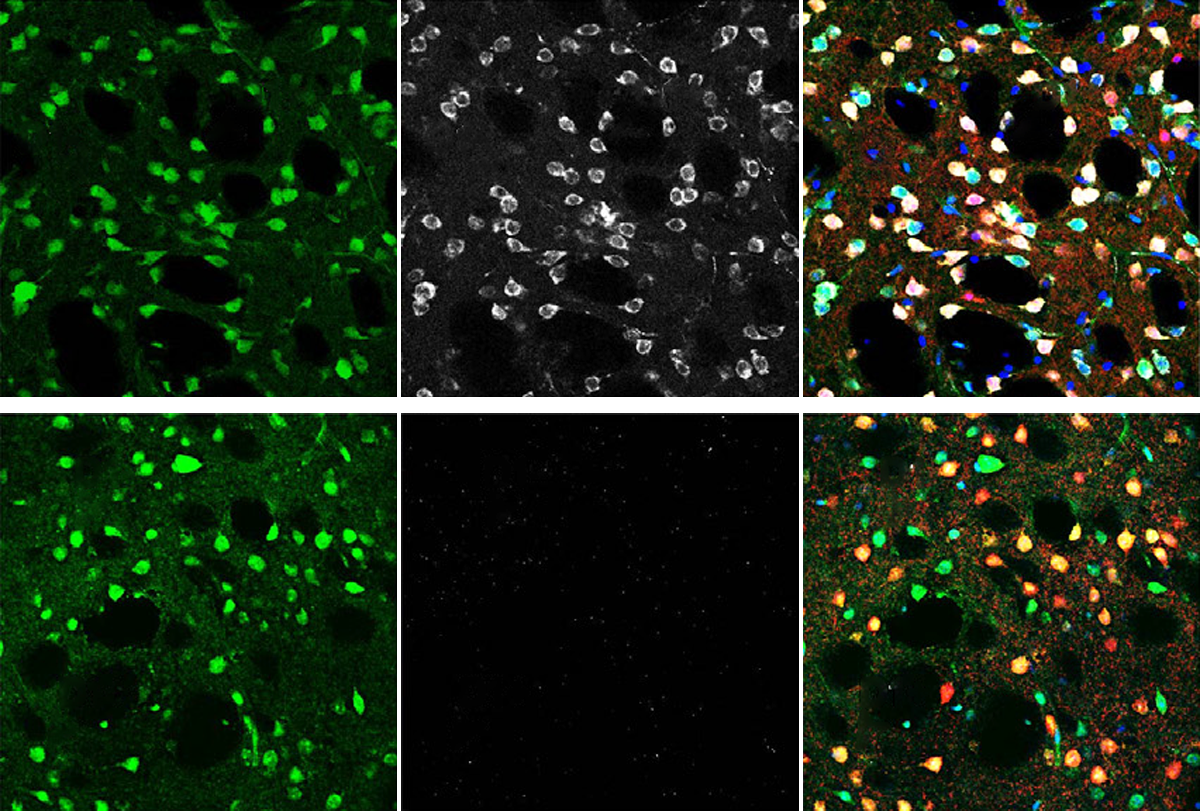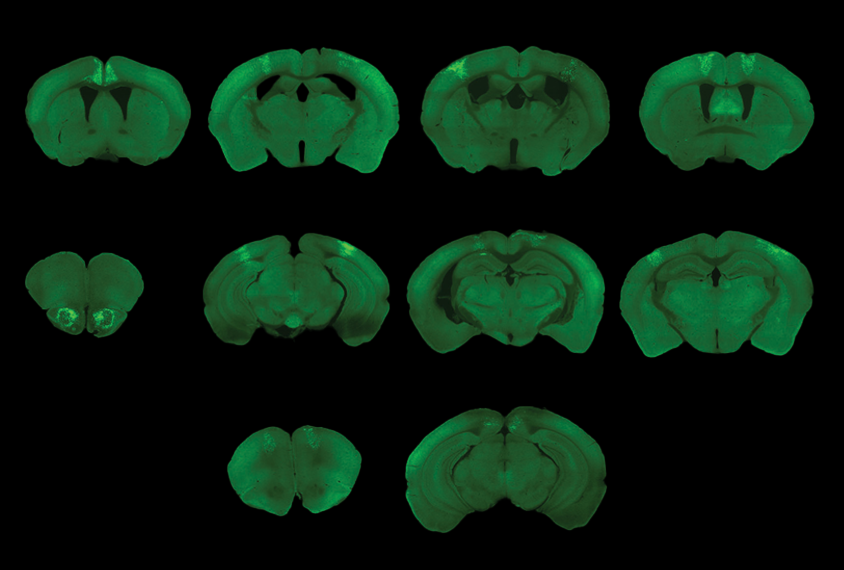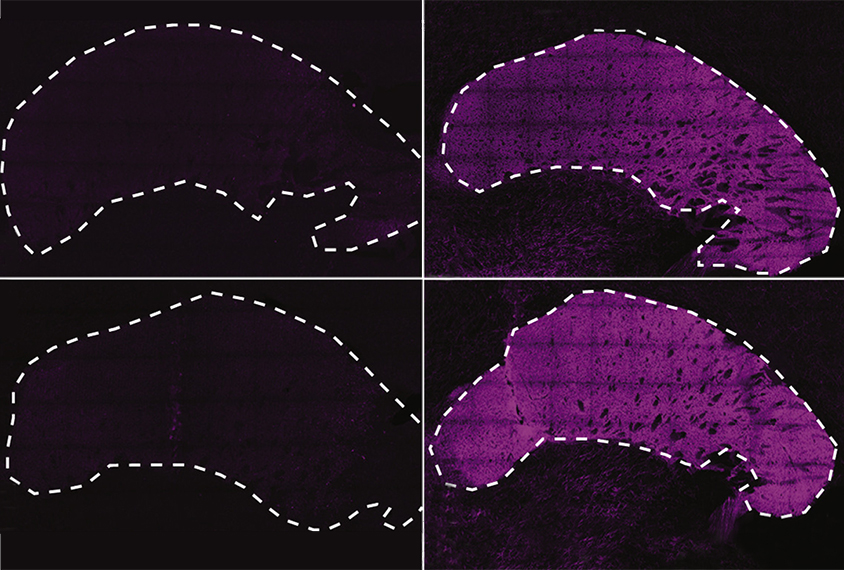Striatum
Skewed signaling in striatum may spawn repetitive behaviors
Synaptic changes in the brain region could drive a core trait of fragile X syndrome, a new mouse study suggests.

Skewed signaling in striatum may spawn repetitive behaviors
Synaptic changes in the brain region could drive a core trait of fragile X syndrome, a new mouse study suggests.
Abundant motor proteins disrupt cries in FOXP2 mice
Knocking down the gene that codes for the proteins normalizes the vocalizations.

Abundant motor proteins disrupt cries in FOXP2 mice
Knocking down the gene that codes for the proteins normalizes the vocalizations.
Autism’s ties to the cell skeleton
Many genes related to the condition play a role in the internal scaffolding of cells, and cytoskeletal disruptions can affect neurodevelopment and behavior.
Autism’s ties to the cell skeleton
Many genes related to the condition play a role in the internal scaffolding of cells, and cytoskeletal disruptions can affect neurodevelopment and behavior.
One-rosette technique grows well-organized organoids
The method yields complex organoids that more closely mimic embryonic brain development than do those cultured in other ways.

One-rosette technique grows well-organized organoids
The method yields complex organoids that more closely mimic embryonic brain development than do those cultured in other ways.
Double SHANK knockout highlights brain circuit’s social role
Mice missing the autism-linked SHANK2 and SHANK3 genes in their retrosplenial cortex have trouble distinguishing between novel and familiar mice.

Double SHANK knockout highlights brain circuit’s social role
Mice missing the autism-linked SHANK2 and SHANK3 genes in their retrosplenial cortex have trouble distinguishing between novel and familiar mice.
Two groups of neurons govern autism-like traits in model mice
Together, the neurons are part of the corticostriatal circuit, which has been implicated in autism.

Two groups of neurons govern autism-like traits in model mice
Together, the neurons are part of the corticostriatal circuit, which has been implicated in autism.
Unfamiliar surroundings bring out autism-like behaviors, brain circuit changes in model mice
A brain area called the tail of the striatum may account for the shift.

Unfamiliar surroundings bring out autism-like behaviors, brain circuit changes in model mice
A brain area called the tail of the striatum may account for the shift.
Loss of autism-linked gene alters synapse development in mice
Mice missing a copy of the gene ASH1L have excess synapses and autism-like behavioral differences, some of which are reversed by boosting an ASH1L-regulated gene.

Loss of autism-linked gene alters synapse development in mice
Mice missing a copy of the gene ASH1L have excess synapses and autism-like behavioral differences, some of which are reversed by boosting an ASH1L-regulated gene.
Brain activity patterns may distinguish girls with autism
Atypical patterns of neuronal activity and gene expression in the striatum may characterize autism in girls, according to a new study.

Brain activity patterns may distinguish girls with autism
Atypical patterns of neuronal activity and gene expression in the striatum may characterize autism in girls, according to a new study.
Brain activity jump-starts autism-linked genes in human neurons
Some neurons activate autism-linked genes when they fire, according to a new study.

Brain activity jump-starts autism-linked genes in human neurons
Some neurons activate autism-linked genes when they fire, according to a new study.
Explore more from The Transmitter
New connectomes fly beyond the brain
Researchers are mapping the neurons in Drosophila’s ventral nerve cord, where the central nervous system meets the rest of the body.

New connectomes fly beyond the brain
Researchers are mapping the neurons in Drosophila’s ventral nerve cord, where the central nervous system meets the rest of the body.
Building an autism research registry: Q&A with Tony Charman
A purpose-built database of participants who have shared genomic and behavioral data could give clinical trials a boost, Charman says.

Building an autism research registry: Q&A with Tony Charman
A purpose-built database of participants who have shared genomic and behavioral data could give clinical trials a boost, Charman says.
Cerebellar circuit may convert expected pain relief into real thing
The newly identified circuit taps into the brain’s opioid system to provide a top-down form of pain relief.

Cerebellar circuit may convert expected pain relief into real thing
The newly identified circuit taps into the brain’s opioid system to provide a top-down form of pain relief.